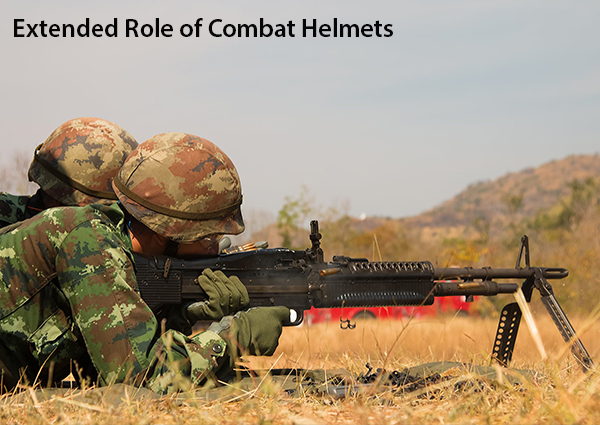Extended Role of Combat Helmets
In this article, you will learn about the extended role of combat helmets. The modern operating environment continues to evolve rapidly with armed forces around the world mostly paying heed to technological advancement in weapon science. Military movements ranging from Humanitarian Assistance and Peacekeeping Missions to Counter-Terrorism and Border
Disputes are being experienced in varied terrains like rain forests, tropical jungles to hot and humid deserts asking cent per cent commitment from combatants without any restraint due to ill-fitted protection gears and low-quality material used in the manufacturing of Ballistic Protection. Helmets have a significant role to play and are tested most during the mission.
No doubt bullet injuries are more lethal, but fungal infections that manage to nourish on the inner side of helmets during deployment of combatants in tropical and rainy terrains, hinder the efficiency/performance by hitting on the concentration of soldier in the battlefield. Harness/Padding system on the inner sides of the helmet can often soak up and maintain high levels of moisture in tropical and damp environments.
It is an essential requirement for agencies facilitating soldiers operating in the jungle environment with proper and quality head gears to defeat itching and related issues when helmets are being worn over an extended period of time. Bad fitting/inadequate ventilation with damp harnesses/pads, lead to discomfort. Extreme chafing due to low-quality material used in the manufacturing of protection gears can also lead to annoyance and infections in severe hot/humid environments.
Helmet itch caused by fungal infection can be very annoying and frustrating. Additionally, critical itch beneath your protective helmet when patrolling through tropical rain forests or arid terrain or while being there on the firing range could be seriously distracting. Helmet itch happens most when wearing headgear frequently or for sustained durations.
Helmet itch can be caused by a type of causes. While some events may be due to helmet lining/harness/pads, itchy scalp can be due to a medical condition, such as dermatitis, dandruff etc. Such difficulties get further aggravated when the material used for harness/pads is friendly for fungal/microbial growth.
Aside from primary issues likes itching and infection, fungal growth may also weaken the functioning or use of material by changing its physical properties. Non-resistant materials used in ballistic helmets are sensitive to direct attack of fungus, resulting in rotting of material used apart from acting as a catalyst for multiplied growth rate. Physical deterioration of material applied in harness/pads of helmets adversely affects the physical properties of the material.
Functioning of today’s helmets extends considerably beyond the mere role of protective headgear. It now serves as an epicentre of soldiers’ situational awareness. Plenty of devices like cameras, Night Sights/Electro-Optical devices, GPS devices and a number of other HMD’s can now be installed on a soldiers helmet allowing up to date situational feed-back to Command and Control centres for inter and intrasquad operating performance.
Looking for helmet online



